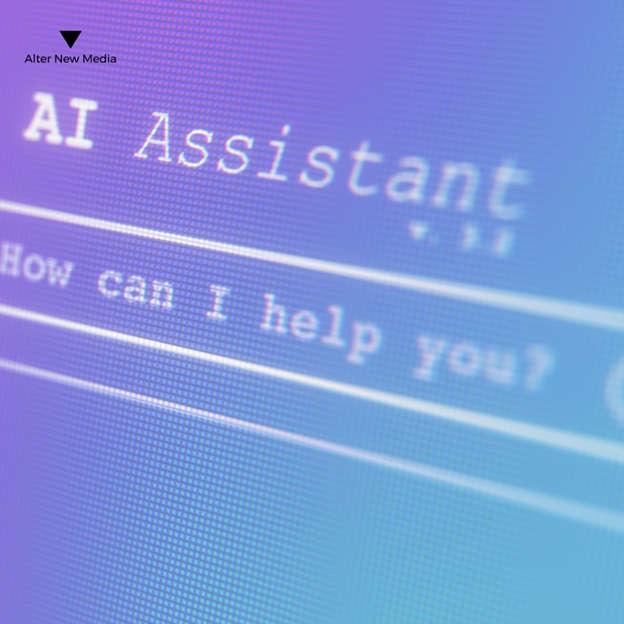While addressing global sustainability and positively impacting communities is central to what nonprofits do, the journey toward meaningful change has shifted profoundly in the digital age.
Nonprofit organizations are not only navigating the complexities of social issues. Still, they are also harnessing the power of cutting-edge technologies to amplify their impact. At the forefront of this technological wave is Artificial Intelligence (AI), a formidable tool that has proven to be instrumental in transforming not just workplaces but also the essence of how nonprofits operate.
For nonprofit organizations, the integration of AI goes beyond mere efficiency—it represents a strategic approach to unlocking new potentials, fostering deeper connections with communities, and, ultimately, driving more impactful change.
The adoption of AI in workplaces has not been a one-size-fits-all phenomenon. Instead, it has given rise to diverse specialized tools, each tailored to address different organizations’ specific needs and challenges.
We believe that by embracing these tools, nonprofits can enhance efficiency and unlock new avenues for meaningful engagement and outreach.
In this blog post, we will explore different AI tools every nonprofit organization should try and why.
1. Chatbots for Enhanced Interaction
AI Chatbots and Virtual Assistants: These tools are game-changers in a world where instant responses can make or break relationships. They can handle inquiries, provide instant support, and even direct users to the right resources without a human needing to be present. This means you can offer round-the-clock assistance without the round-the-clock staffing. It’s efficient and effective, and precisely what your nonprofit needs to stay connected with your community.
Why It’s Useful:
- 24/7 Availability: Chatbots provide round-the-clock assistance, answering common queries and providing information without human intervention.
- Personalized Engagement: They can be programmed to deliver customized messages based on user interactions, making communications more tailored and engaging.
- Resource Efficiency: Chatbots can handle a high volume of queries, freeing up staff to focus on more complex tasks.
Real-World Application: A nonprofit focusing on mental health could use a chatbot to provide initial guidance and resources to individuals seeking help, ensuring immediate response and triaging cases for human counselors.
2. Data Analytics for Strategic Insights
AI Analytics Tools: Data Analytics is your strategic linchpin, providing invaluable insights through the lens of Artificial Intelligence. This sophisticated tool acts as a discerning guide, unraveling the intricacies of donor behavior, campaign efficacy, and service delivery patterns. Its integration transcends mere data interpretation; it transforms decision-making into a nuanced and informed process, elevating strategic planning into an art form.
Beyond the metrics, Data Analytics crafts compelling narratives of program impact, arming nonprofits with articulate evidence for stakeholders. With precision akin to a well-tuned instrument, it identifies optimal campaign audiences, ensuring targeted outreach and maximizing engagement.
In the practical realm, envision Data Analytics as the organizational compass, directing efforts towards regions most aligned with the nonprofit’s mission, thereby enhancing operational efficiency and impact.
Why It’s Useful:
- Informed Decision-Making: By understanding patterns in donor behavior, campaign effectiveness, or service delivery, nonprofits can make data-driven decisions.
- Impact Assessment: These tools can help measure and report on the effectiveness of programs, demonstrating impact to stakeholders.
- Targeted Campaigns: AI-driven analytics can identify the most responsive audiences for fundraising or awareness campaigns.
Real-World Application: An environmental nonprofit can use data analytics to identify regions most responsive to their message, optimizing their outreach efforts and resource allocation.
3. Automated Content Creation for Effective Communication
AI Writing Assistants: Let’s talk about content. We all know content is king, but creating engaging content consistently can be a pretty royal pain, especially with limited resources. That’s where AI Writing Assistants come in.
These AI tools can help you generate ideas, craft compelling narratives, and tailor content to your specific audience. They’re like having a 24/7 creative writer on your team, minus the coffee breaks! With an AI assistant, your newsletters, social media posts, and blogs will attract and captivate your audience.
Why It’s Useful:
- Efficiency in Content Production: AI can quickly produce drafts of blog posts, social media updates, or marketing materials, saving time and resources.
- Consistency and Branding: Automated tools can maintain a consistent tone and style, reinforcing the nonprofit’s brand across various platforms.
- SEO Optimization: AI tools can optimize content for search engines, increasing the visibility of the nonprofit’s online presence.
Real-World Application: A charity organization could use automated content creation tools to maintain a consistent and engaging social media presence, reaching a broader audience with less manual effort.
4. AI-powered Customer Relationship Management (CRM) Systems
Remember when you’ve struggled to keep track of your donors, their preferences, and donation history? Well, those days are over! Modern CRM systems, equipped with AI, can help you manage existing donor data, predict donor behavior, suggest the best times to reach out, and even identify potential new donors. Imagine a world where you’re not just reaching out but effectively. That’s what AI-powered CRM does for you.
Why It’s Useful:
- Personalized Donor Engagement: AI can segment donors based on their interests and past interactions, allowing for more personalized communication.
- Predictive Analytics: These tools can predict which donors are more likely to contribute again, helping nonprofits focus their efforts.
- Streamlined Processes: AI can automate routine tasks in fundraising, like data entry and report generation.
Real-World Application: A humanitarian aid organization can use AI-powered fundraising tools to tailor their messages to different donor segments, increasing the effectiveness of their fundraising campaigns.
Remember, in this digital age, it’s not just about working hard; it’s about working smart. And with these AI tools, you’re doing just that. So try them, and watch as they transform how your nonprofit operates. After all, when nonprofits thrive, the world becomes a better place.
These AI tools are just the tip of the iceberg but are a great place to start. Embrace them, and you’ll find managing donor relationships, creating engaging content, navigating the social media maze, and communicating with your audience becomes more effective and less overwhelming.
Join Our Free Marketing Strategy Challenge
While discussing AI tools is crucial for amplifying your nonprofit’s impact, it’s equally important to constantly innovate and adapt in your marketing strategies.
That’s why we’re thrilled to introduce an exciting video content for your view! — Our founder and CEO, Nadya Rousseau, hosted a FREE 3-Day Marketing Strategy Challenge!
It’s transformative, and you can find the Facebook Group here, designed to revolutionize your approach to marketing for 2024.
Whether you’re a startup founder, small business owner, influencer, non-profit leader, author, creative, or anyone looking to make a significant impact, this video is for you.
The holiday season is also a planning season, and there’s no better time to gear up for a successful year ahead. Don’t miss this chance to elevate your marketing game and enjoy a transformative experience!


